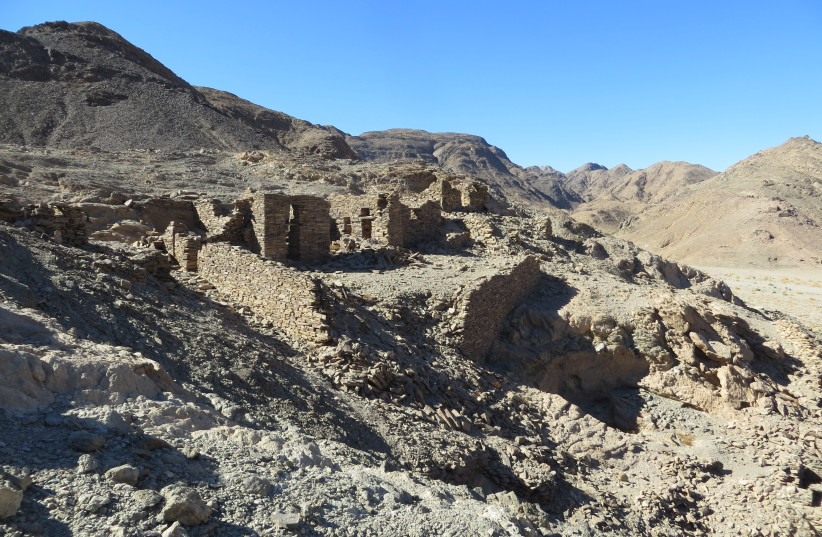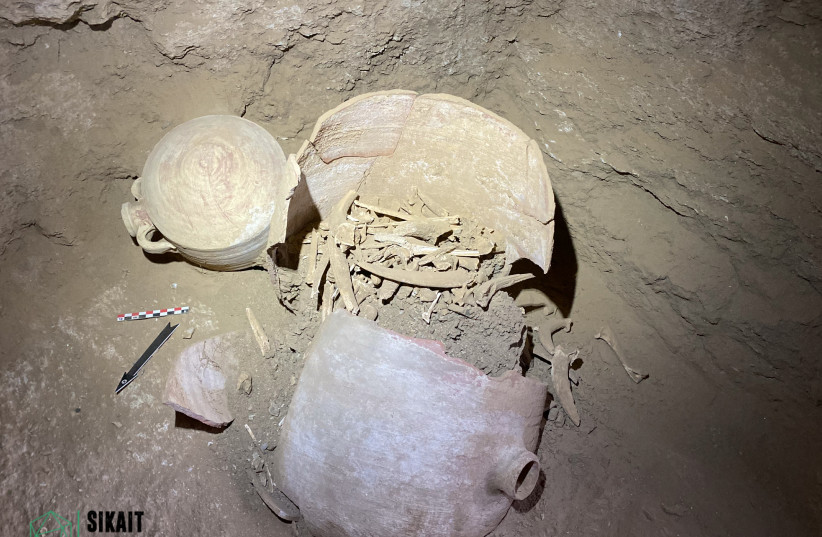Deep in the eastern desert of Egypt near the Red Sea, first the Romans, and then after them, the nomadic Blemmyes tribes, mined for emeralds.
The site, known in antiquity as “Mons Smaragdus” and called Sikait by the Romans in the late Roman period, was the only place in all the Roman Empire where emeralds were found.
An ancient inscription by a Roman legion uncovered during the last two seasons of an excavation there by Polish and Spanish archaeologists documents for the first time that the Roman army was directly involved in the exploitation of Egypt’s emerald mines “not only to defend them, but also probably to help in their construction,” said Barcelona Autonomous University Department of Antiquity and Medieval Studies lecturer Joan Oller in a press release.
The excavation of the layers from the 4th to 6th centuries CE during the late Roman period also revealed that some of the buildings were occupied, or possibly even built, by the Blemmyes who lived in the area at the end of the 4th century.
Hence, the study also suggested that the Blemmyes might have taken control of the emerald mines sometime in the 4th to 6th centuries CE until the mining activities ended.

The nomadic kingdom of Blemmyes originated in northern Nubia and the tribes were involved in military clashes with the Romans.
The team of archaeologists for the first time conducted a detailed topographic study of the two most important mine sites they uncovered – one 40 meters deep consisting of hundreds of galleries – in order to try to determine how the work inside the mines was structured.
They identified up to 11 extracting areas surrounding Wadi Sikait, the dry valley in which the archaeological site is located. Large-scale mining could only begin once the most productive veins of beryl were identified.

The process of extracting beryl, the mineral from which emeralds are formed deep in the earth combined with the right temperature and pressure, was both complex and intense, according to the report published in the Journal of Near Eastern Studies.
The operations included logistical infrastructures such as small settlements, ramps, paths, working areas, watchtowers and also necropolises – cemeteries with elaborate tomb monuments – including one with over 100 tombs, which researchers said has provided them clues to ancient funerary rites and social features of the community living there shortly before the site was abandoned.
The archaeologists also documented two perfectly preserved ritual sanctuaries at the main temple of Sikait, known as the Large Temple. One of the sanctuaries contained the last votive offering – usually a personal offering in the form of a figurine or carving to a god – still intact. They calculated the offering would have been made sometime between the 4th and 5th centuries CE.
“The discovery confirms the relevance of religion and local rituals in this late period, and this suggests that the exploitation of the mines may have fallen into the hands of the Blemmyes during this time, before the fall of the empire,” Oller, who led the study, explained in the press release.
Excavations at the Small Temple have uncovered part of an inscription in Greek dedicated to different Egyptian divinities.
Researchers also excavated one of the most impressive building complex, the Tripartite Building, which was probably used both as a residence and as a warehouse for the emeralds extracted from the mines.
